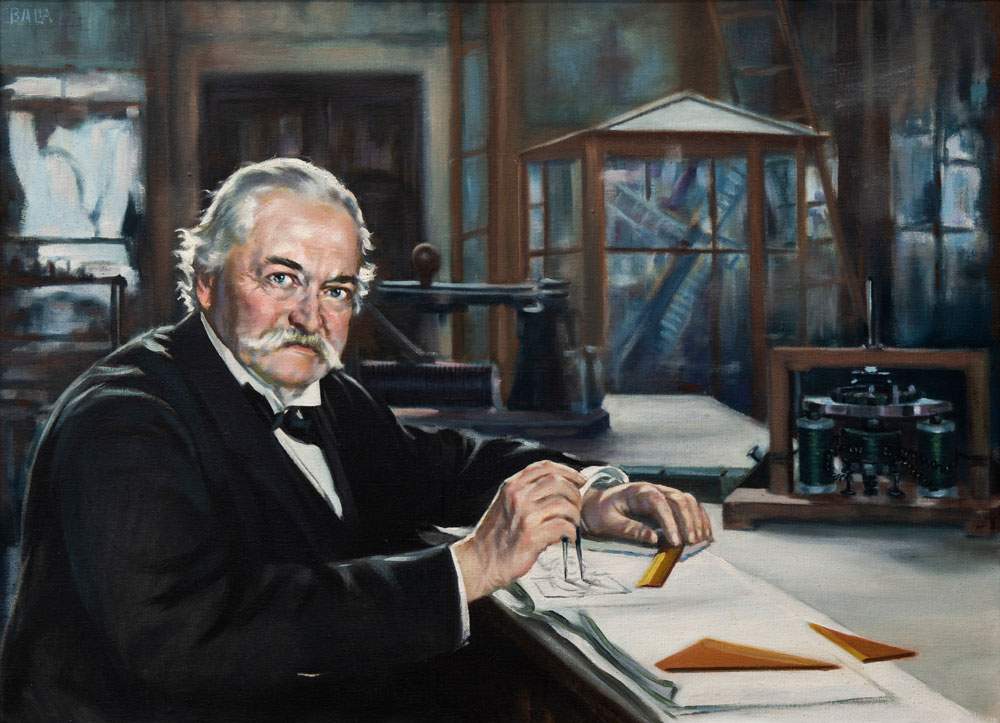An unpublished painting by Giacomo Balla was unveiled this morning in Pisa’s Palazzo Blu, which will be exhibited exceptionally from Saturday, January 11, 2020. It is a portrait of Antonio Pacinotti created by the futurist artist.
The painting depicts one of the noble fathers of theUniversity of Pisa, was probably executed around the mid-1930s and is signed. Neither the exact date of execution nor the motif is known; it is currently owned by the University of Pisa, located in the School of Engineering on Diotisalvi Street.
Antonio Pacinotti (Pisa, 1841 - 1912), scientist, university professor, known for being the inventor of the dynamo and the DC electric motor, was professor of Physics at the University of Pisa from 1881 to 1912 and Director of the Cabinet of Technological Physics, also at the University of Pisa. When he was only then admitted to the University of Pisa’s Bachelor of Applied Mathematics program; during his career, he turned his attention to physics and electrodynamics in particular. In April 1860 he made the first prototype direct current dynamo/motor, the “macchinetta” as he called it.
Giacomo Balla ’s painting depicts Pacinotti in his old age at his work table and, next to him, his most famous invention, the dynamo. The painting is set in the Cabinet of Technological Physics that stood at 14 Via Santa Maria, inside the Institute of Physics at the University of Pisa, where Pacinotti held the position of full professor of Technological Physics and Experimental Mechanics. Among the little information known to date, we know that the work is a faithful pictorial reproduction of a 1911 photo featured in a publication celebrating Pacinotti’s 70th birthday and for the 50th anniversary of the invention of the dynamo. The celebratory aspect and stylistic characteristics of the painting date its creation to the 1930s, prior to 1941, the year in which a reproduction of it appeared, for the first time, in the book Antonio Pacinotti nel primo centenario della nascita, published by Vittorio Emanuele Boccara.
Some historical information allows us to identify the commissioning context of the work. In the building on Via Santa Maria, home of the Cabinet of Technological Physics, was also the apartment where Pacinotti was born and lived until his death. And also here, in 1930, the Pacinotti Museum was founded in order to collect and preserve the memorabilia that the scientist’s heirs had donated to the School of Engineering. The list of the bequest, however, does not mention the painting, nor does it in the catalog of the exhibition of Pacinottian memorabilia held from May 24 to June 30, 1934, in the Aula Magna of the University of Pisa, on the occasion of the celebrations of the 75th anniversary of the invention of the dynamo. The solemn celebrations kicked off, at the Verdi Theater, with the commemoration presided over by Guglielmo Marconi. On that occasion, the Pacinotti Museum was declared a national monument, and later, in the second half of the last century, the memorabilia owned by the University of Pisa and kept in the museum were divided among various institutes. From the research done, it is speculated that the painting was made as part of the solemn Pacinotti celebration in 1934. The painting’s stylistic analysis also hints at the 1930s, when Balla chose to return to traditional figuration, far from the Futurist avant-garde.
The portrait will be on view for free until Sunday, February 9, 2020.
 |
| Pisa, an unpublished Giacomo Balla painting resurfaces: it was hidden in the faculty of engineering and now goes on display |
Warning: the translation into English of the original Italian article was created using automatic tools. We undertake to review all articles, but we do not guarantee the total absence of inaccuracies in the translation due to the program. You can find the original by clicking on the ITA button. If you find any mistake,please contact us.